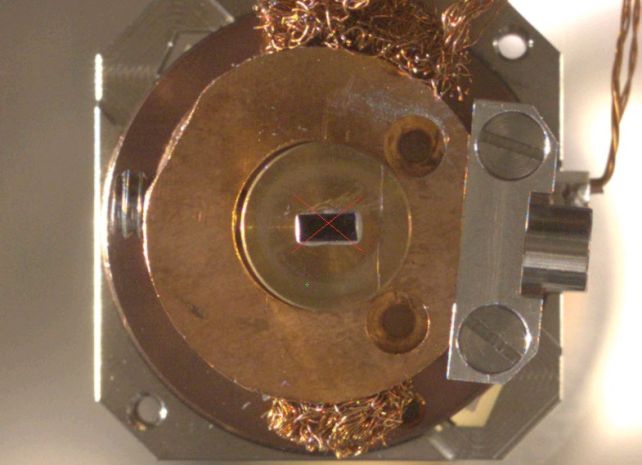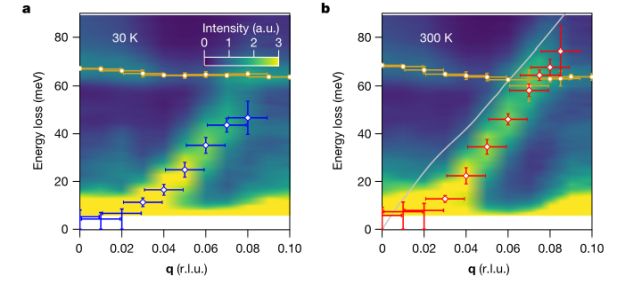Physicists studying an exotic material stumbled across an important quantum phenomenon predicted decades ago.
It's called Pines' Demon, predicted in 1956 by late physicist David Pines, and its discovery in a material called strontium ruthenate (Sr2RuO4) marks the first time it has been identified in an equilibrium 3D metal.
Since Pines' Demon is predicted to play an important role in a wide range of phenomena, such as transitions in particular kinds of semimetals and superconductivity, the work has important implications for material physics.
"We found this thing by accident," said physicist Peter Abbamonte of the University of Illinois in a talk describing the discovery.
"We saw this excitation back in 2018 took a while to figure out what it is and it turned out to be this demon mode."

Usually in science, a "demon" is a hypothetical opponent for scientists and philosophers to argue against in a thought experiment, but Pines' Demon is quite different.
It's actually a type of plasmon – a discrete unit of waves among rippling through a population of electrons . Plasmons have been described as the quantum analogue of an acoustic sound in a classical gas.
Pines named this plasmon a "demon" in honor of James Clerk Maxwell, who conceived Maxwell's Demon, and because it's a distinct electron motion, or D.E.M.
When a sound wave wiggles its way through a collection of particles, it slowly quietens down as the jiggling comes to a stop. As quantum 'sounds', however, a plasmon is very all-or-nothing. A very specific amount of energy is required for every increase in frequency.
Pines' demon is a plasmon frequency with no cost of electrical charge. They occur when electrons in a material that have different energy ranges, or bands, move out of phase.
There's no transfer of energy, but there is a shift in the occupancy of the bands. A "demon" is a neutral collective mode that has been damped, or screened, by another band of electrons.
Plasmons have been seen and widely studied in 2D metals, but because they are electrically neutral and don't couple with light, they are hard to detect. This brings us to strontium ruthenate.
At low temperatures, the material acts as a superconductor. At higher temperatures, it gets a bit weird, and turns into what is known as a bad metal, one whose properties don't necessarily behave the way we expect them to.
According to a team led by physicist Ali Husain, formerly of the University of Illinois in the US, now at the University of British Columbia in Canada, it's also an excellent candidate for the identification of demons – with three nested bands of electrons, two of which contrast similarly to the original 1956 conceptualization of the demon.

Husain was studying strontium ruthenate with electron spectroscopy when he found something in the data that looked like a quasiparticle – that is, a collective excitation that behaves like a particle.
There are quite a few known quasiparticles, but what the researchers found didn't match any of them. Its velocity was too fast to be an acoustic phonon; and too slow to be a surface plasmon.
Follow-up analysis showed that the most likely candidate was a demon; and the team was even able to replicate the detection. And a study of some of its properties raised some questions.
The damping effect was smaller than expected, for example, and there were curious holes in the different electron bands.
At the moment, that's pretty much where the research sits, but it's certainly ripe for follow-up, especially since demons could be playing a crucial role in superconductivity.
The researchers believe that other multi-band metals may be good places to study them to observe how their behavior might change in a range of contexts, and that higher-resolution studies may be possible with scanning electron microscopy.
This, they hope, could answer their new questions, and help devise a more complete and sophisticated theory of demons.
The research has been published in Nature.
